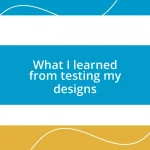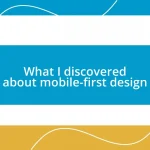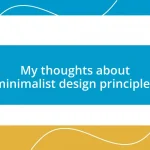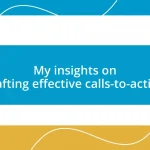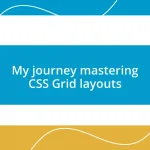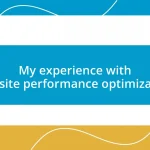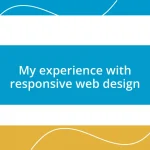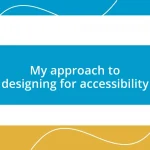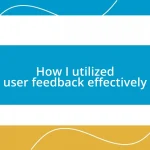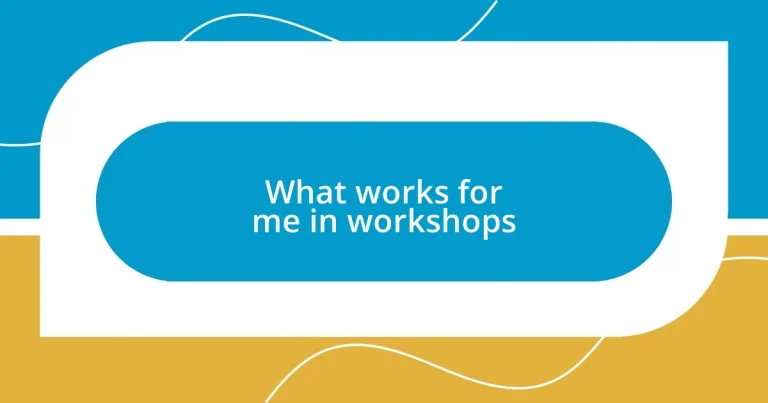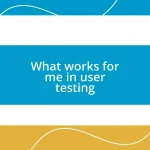Key takeaways:
- Clearly defined workshop objectives enhance engagement and provide a roadmap for success.
- Choosing the right workshop format, such as interactive or blended learning, significantly improves participant retention and collaboration.
- Incorporating interactive activities, like role-playing and hands-on group sessions, fosters community and deepens understanding.
- Regularly gathering feedback helps refine future workshops and adapt techniques to better meet participants’ needs.
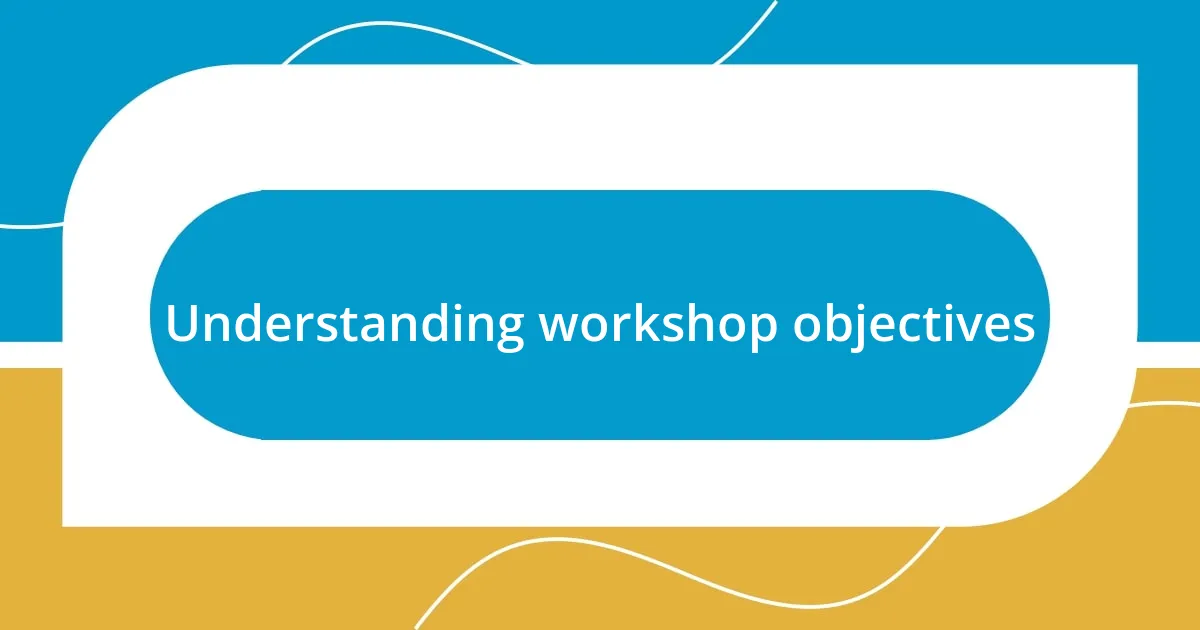
Understanding workshop objectives
Understanding workshop objectives is crucial; they serve as the foundation for a meaningful learning experience. I remember attending a workshop that lacked clear objectives, and it left me feeling confused and disengaged. It made me realize how essential it is to know what we’re aiming for to truly benefit from the experience.
When I plan or participate in a workshop, I ask myself, “What do I hope to gain from this?” This reflection often clarifies my expectations and helps me engage more deeply. It also allows me to align my personal goals with those of the workshop, turning a passive experience into an active, rewarding journey.
Objectives also create a roadmap for success. For instance, in a recent workshop on team dynamics, the facilitator outlined specific goals, which kept everyone focused and collaborative. Can you imagine how much more effective the session was? The clarity gave us purpose and made the learning experience not just memorable, but genuinely transformational.
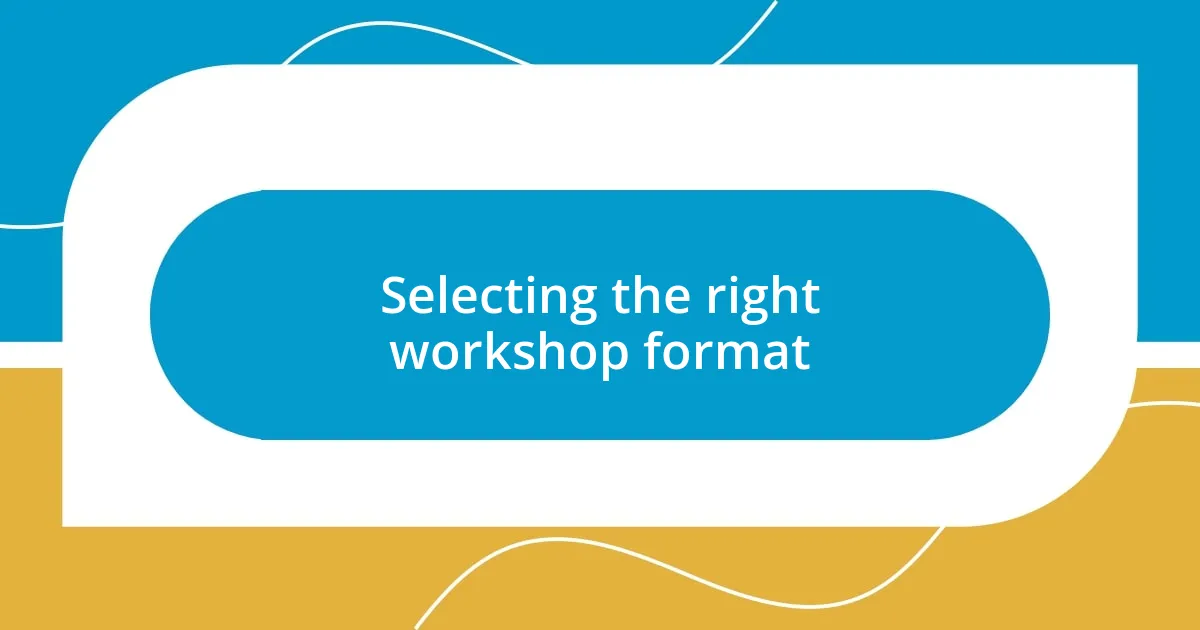
Selecting the right workshop format
When it comes to selecting the right workshop format, I’ve found that the choice can significantly impact both engagement and information retention. For instance, I once attended a hands-on workshop where small group activities were woven into the agenda. It was incredible! This interactive approach allowed me to learn from my peers while applying concepts in real-time, which made the learning process feel much more dynamic and relatable.
On the other hand, I’ve experienced lecture-style workshops where the facilitator dominated the conversation. While the content was undoubtedly valuable, I noticed my mind wandering after a while. The lack of interaction made it challenging to stay engaged. I learned that varying the format – shifting between presentations, discussions, and activities – can keep energy levels up and promote better knowledge absorption.
To make an informed decision, you might consider your audience and objectives. Do they thrive in a collaborative environment, or do they prefer structured learning? For example, in a recent workshop on creative problem-solving, a blend of brainstorming sessions and guided discussions led to some exciting breakthroughs. It highlighted for me the importance of tailoring the format to fit the needs of the participants, ensuring a richer learning experience.
| Format | Description |
|---|---|
| Interactive Workshops | Focus on collaboration and hands-on activities, enhancing engagement and retention. |
| Lecture-Style Workshops | Traditional format primarily led by an instructor, can often lead to disengagement if not varied. |
| Blended Learning | Combines different formats such as presentations and discussions, fostering a more dynamic learning environment. |
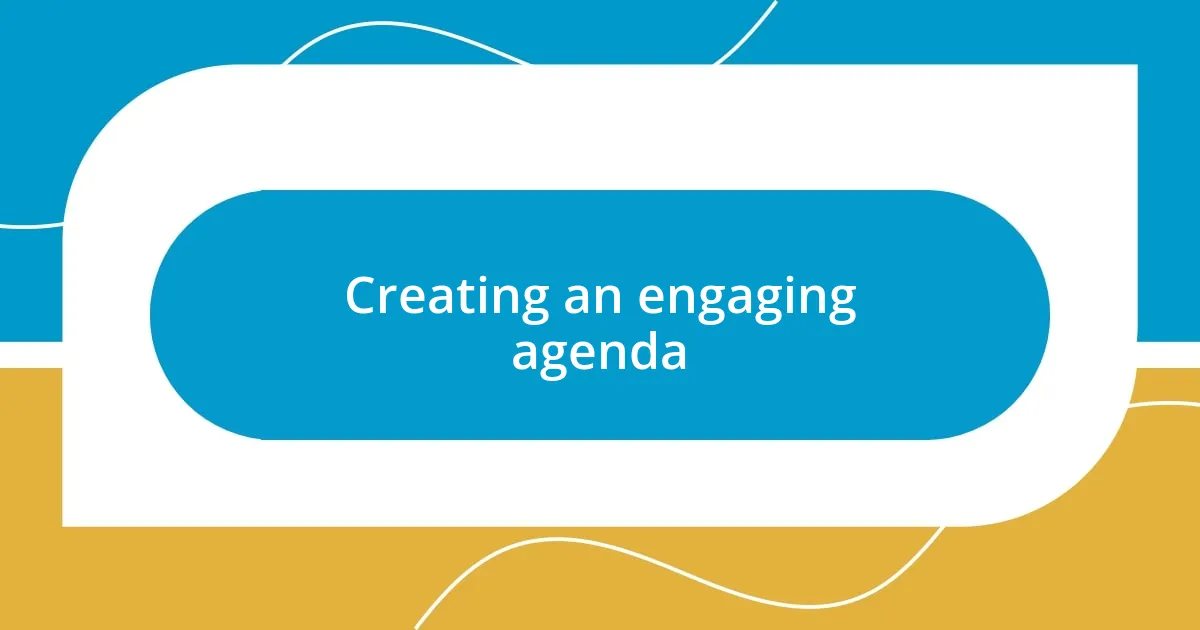
Creating an engaging agenda
When I set out to create an engaging agenda, I emphasize the importance of variety and interactivity. For example, during a recent workshop on digital marketing, I incorporated interactive polls and breakout sessions alongside traditional presentations. This blend kept participants eager and curious, allowing them to contribute their thoughts and experiences. Engaging everyone from the outset fuels creativity and keeps the momentum going throughout the session.
Here are some strategies I’ve found effective for crafting an engaging agenda:
- Start with Icebreakers: Kick off the workshop with activities that warm up the group and foster connections.
- Break Down Content: Rather than packing everything into long sessions, I break topics into smaller, digestible segments interspaced with discussions.
- Incorporate Variety: Mix presentations, group activities, and hands-on workshops to maintain interest.
- Allocate Time for Reflection: Allow participants moments to think and process, making their contributions more thoughtful and engaged.
- Leave Room for Flexibility: Embrace spontaneity where appropriate; if a particular discussion sparks energy, be open to exploring it further.
I believe that crafting an engaging agenda isn’t just about the structure; it’s about creating a space where participants feel valued and excited to learn together.
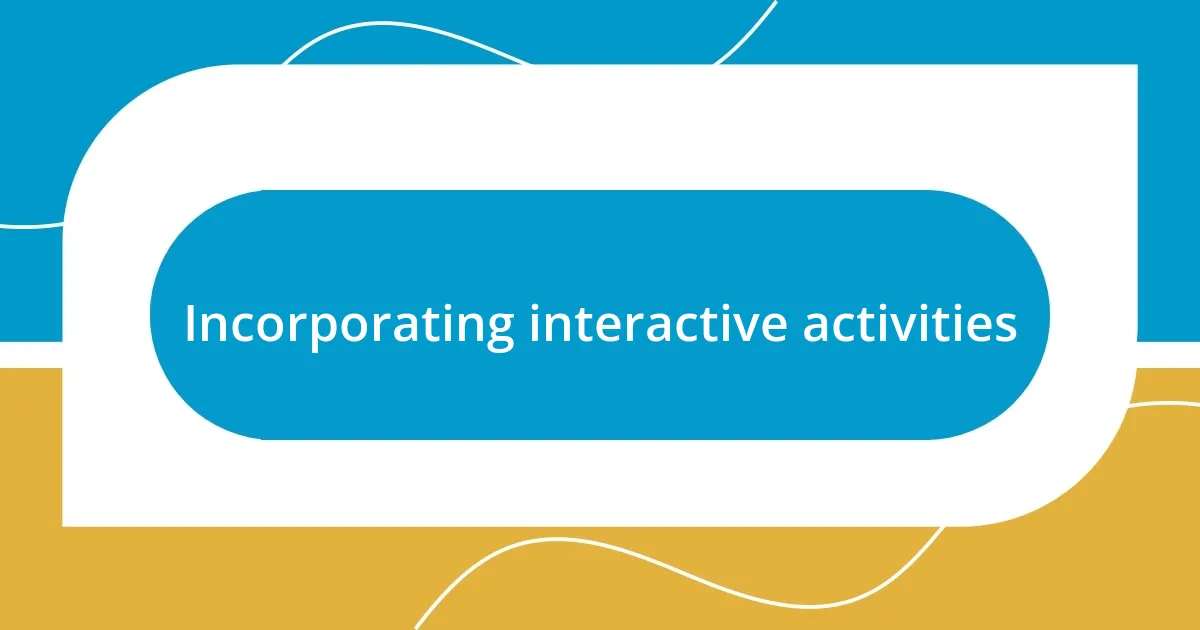
Incorporating interactive activities
Incorporating interactive activities into workshops is an absolute game-changer for keeping participants engaged. I remember a session where we tackled a complex subject through role-playing. Each participant stepped into a different character’s shoes, which not only sparked laughter but also deepened our understanding of the material. Isn’t it amazing how stepping out of our everyday roles can lead to those light-bulb moments?
I’ve also found that hands-on activities, like creative brainstorming sessions, can supercharge group dynamics. During one workshop, we broke off into small teams to tackle case studies. The buzz of conversation was infectious! Everyone brought unique perspectives, creating an atmosphere of shared learning and vibrant energy. It’s incredible how a little collaboration can lead to big insights, don’t you think?
Moreover, adding short, interactive breaks throughout the workshop can refresh the minds in the room. For example, I’ve led quick team-building challenges that not only lighten the mood but also reinforce the themes of the workshop. They serve as a reminder that learning doesn’t have to be a serious endeavor. Embracing playful activities fosters a sense of community, making everyone feel more connected—both to the content and to each other.
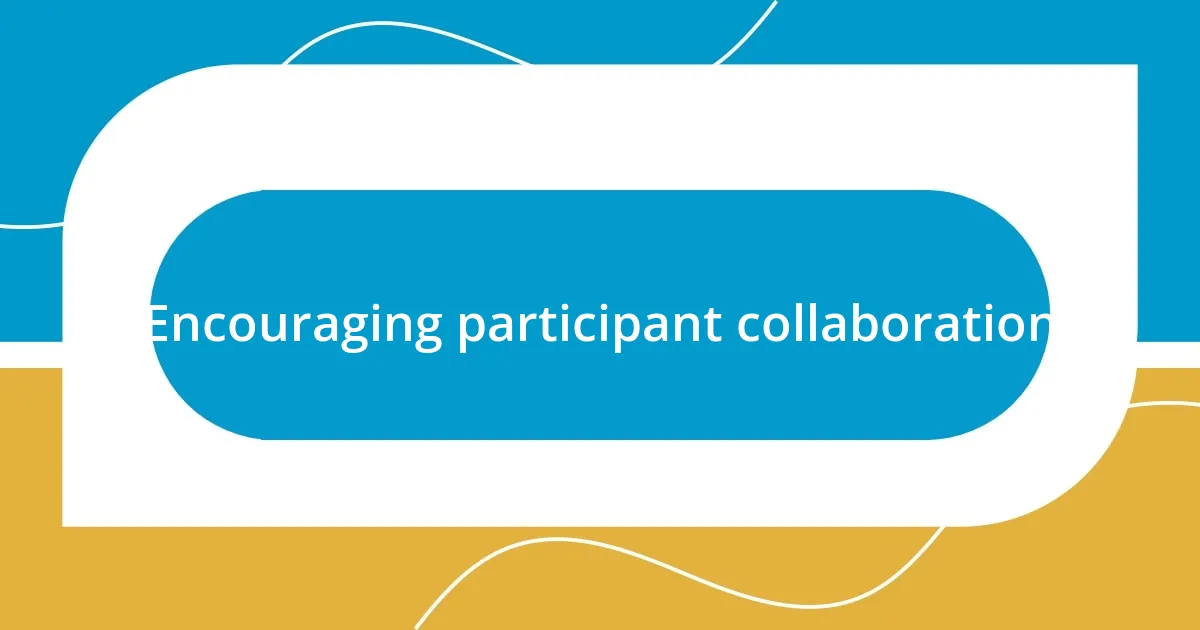
Encouraging participant collaboration
Encouraging collaboration among participants is vital to creating a dynamic workshop environment. I once facilitated a workshop where we identified shared goals through a collaborative mural project. As everyone contributed their ideas and sketches, I noticed how quickly barriers fell. Watching hesitant participants transform into enthusiastic contributors filled me with joy. Isn’t it remarkable how a shared objective can unite a group?
Another approach I’ve used effectively is the ‘think-pair-share’ method. In one session, after presenting a new concept, I invited participants to discuss their thoughts with a partner before sharing with the larger group. It amazed me how this simple structure inspired confidence in quieter voices. Hearing ideas bounce around the room as people engaged with one another felt electric—every contribution added value and depth to the discussion.
I also believe in leveraging digital tools to enhance collaboration, especially in workshops held online. During a recent virtual gathering, I used breakout rooms for small group discussions, which allowed participants to collaborate in a more intimate setting. I could sense the excitement in the air as they brainstormed solutions together! Watching them connect over shared challenges reminded me of the importance of creating moments that foster connections, regardless of the medium we use.
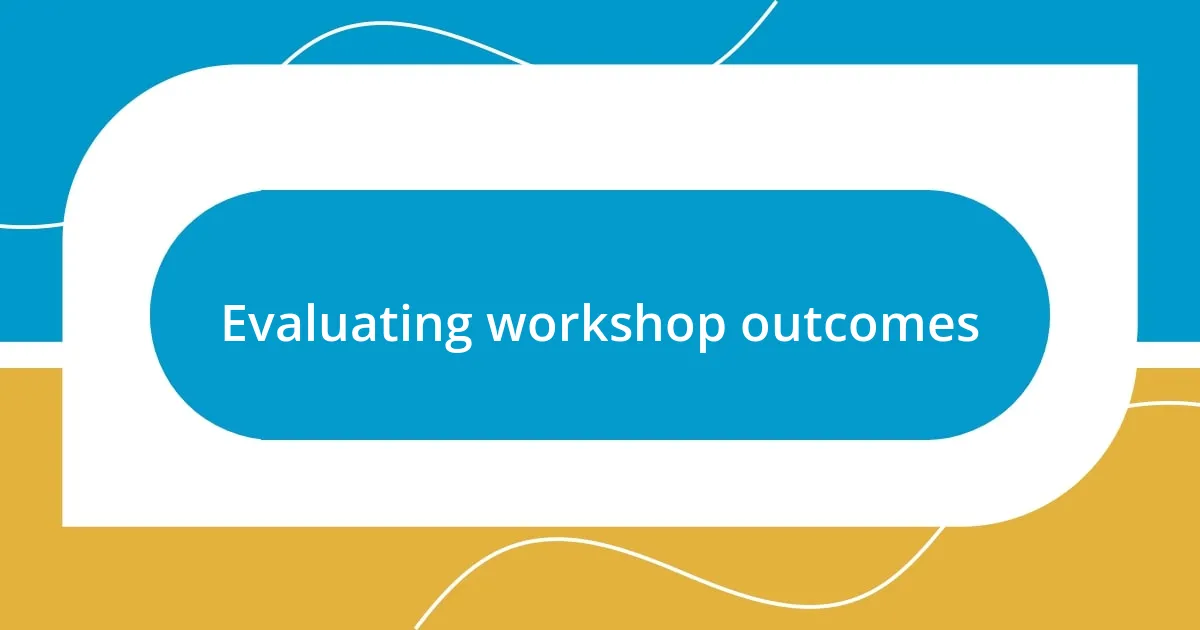
Evaluating workshop outcomes
Evaluating workshop outcomes is crucial to understanding the effectiveness of your approach. I always take the time to gather feedback immediately after a session. One memorable experience was when I handed out anonymous surveys with simple questions like, “What was your biggest takeaway today?” The responses provided profound insights into what resonated with participants most, reminding me how important it is to listen actively to their perspectives.
Another method I find invaluable is reflecting on specific participant behaviors during the workshop. For instance, during a recent workshop focused on communication skills, I noticed increased eye contact and engagement as participants interacted in small groups. This shift told me they were genuinely applying what they were learning. Isn’t it rewarding to witness such a transformation? It reinforces the idea that successful workshops not only convey information but also inspire real change in behavior.
Additionally, I always follow up weeks later to check in on participants’ application of the skills or concepts. During one follow-up, a participant shared how he had successfully implemented a team-building strategy we discussed, which improved collaboration at his workplace. Hearing such stories motivates me to continually refine and adapt my workshop techniques. Don’t you think it’s fascinating how the ripple effects of a single session can extend far beyond the workshop room?
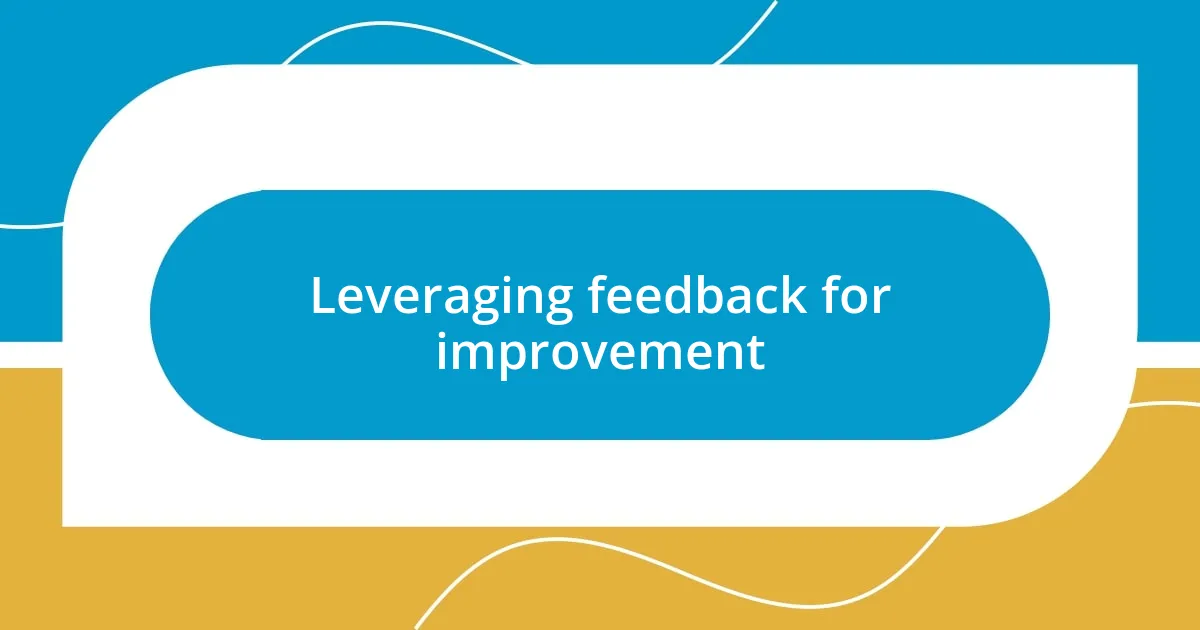
Leveraging feedback for improvement
Feedback is a powerful tool for improvement, and I’ve learned to embrace it wholeheartedly. During a workshop on creative problem-solving, I asked participants to reflect on what worked well and what could be refined. Their candid feedback sometimes surprised me—in one instance, they suggested incorporating more hands-on activities rather than just discussions. This input not only helped shape future workshops but also deepened my understanding of what truly engages attendees.
I vividly recall a moment when a participant challenged me to reconsider an activity I had been using for years. Initially, I felt a bit defensive, but I chose to view it as an opportunity. After mulling over their suggestion, I adapted the exercise, and it evolved into one of the most effective methods in my toolkit. It’s a reminder that constructive criticism can lead to growth. How often do we let pride cloud our judgment when feedback could be the key to enhancing our work?
Another impactful strategy I employ is to encourage participants to provide feedback on each other’s contributions. In one session, I saw how this peer assessment not only boosted confidence but also built a supportive community. When participants recognized one another’s strengths, it created an atmosphere of camaraderie. Have you ever felt the lifting power of positive reinforcement? It’s truly remarkable how a single uplifting comment can spark a shift in someone’s perspective, not just about their work but about their potential.

